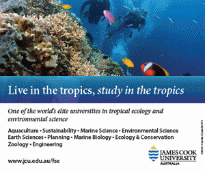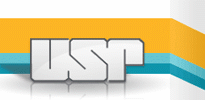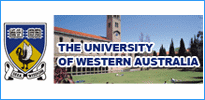Chile: Chile Education Profile 2012
2012/02/29
Chile Education Profile 2012
Levels of education
The levels of education in Chile are:
- Pre-school: For children up to 5 years old, optional for 1 grade.
- Primary school, (Enseñanza básica) for children from 5-13 years old, divided into 8 grades.
- Secondary school, (Enseñanza media) for teenagers from 13-18 years old, divided into 4 grades.
Secondary school is also divided into:
- 1. Scientific-humanities approach: From Tercero Medio (11th grade) in highschool, students can choose a major in either science (math, physics, chemistry, biology), or humanities (literature, history, sociology), which means they will get more lessons in the area of their choice.
- 2. Technical-Professional education: Students receive 'extra' education in the so-called 'technical' areas, such as electricity, mechanics, metal assembly, etc. This second type of education is more typical of public schools (Liceos), to give students from poorer areas a chance to work right away after completion of highschool, as a way to fund a possible higher education career later.şḤ
* University, a system divided in public or 'state' universities and a private system.
Mandatory right to education
Until recently, only primary school education was mandatory for Chileans. On May 7, 2003, former president Ricardo Lagos, issued a law making high-school education also mandatory, giving the State responsibility for education of all Chileans under 18 years old.
Also, there is a law to guarantee full coverage of care and education to children from age 2 to 5 by the end of the current government of Michelle Bachelet.
The twelve years of mandatory, free education, make Chile a special case within Latin America.
In 1990, the LOCE act on education, passed by Pinochet's government, completed the dismantlement of public education (Superior Education had been privatized earlier on)
"Overall, the impact of neoliberal policies has reduced the total proportion of students in both public and private institutions in relation to the entire population, from 30 per cent in 1974 down to 25 per cent in 1990, and up only to 27 per cent today. If falling birth rates have made it possible today to attain full coverage at primary and secondary levels, the country has fallen seriously behind at tertiary level, where coverage, although now growing, is still only 32 per cent of the age group. The figure is double this in neighbouring Argentina and Uruguay, and even higher in developed countries—South Korea attaining a record 98 per cent coverage. Significantly, tertiary education for the upper-income fifth of the Chilean population, many of whom study in the new private universities, also reaches above 70 %."
Admission to University
Students can choose between 25 state universities or private ones, which are increasingly growing in number. For admission to state universities, students must do a University Selection Test, called PSU, which consists of two mandatory 'basic subjects' test (math and literature), plus other specific exams (chemistry, physics, biology, universal history), depending on what the student wishes to study.
Currently exists a big gap between students coming from public schools and those coming from private schools. The results in PSU obtained from students coming from private schools are far higher than those coming from public ones. It is for this reason that it is difficult for lower class students coming from Liceos to study in Universities which require high entrance scores. Some lower class students, the most talented, achieve very high PSU scores and the government offers 100% tuition scholarships for these students, though, these cases are not much. For students that can't afford to pay Public or Private Universities, the government offers loans (i.e Crédito Corfo). Many students are not satisfied with the way these loans operates and react in different ways such as protesting or not assisting to school.
According to media and official statistics, in 2006 a total 241,390 students did the PSU.
The admission fee to do the PSU can be quite costly for students belonging to the poorer areas of society (up to $28,000 Chilean Pesos or around US$50), due to which a current demand from students is that the state can subsidise the admission fee for poorer students.
Education and R&D are still weak pillars in Chile’s development model. Chilean governments have undertaken significant reforms in education by extending the coverage of pre-primary education, by establishing a universal 12 years of schooling in the constitution, and by replacing the entry test qualifying students for higher education. During Bachelet’s term, preschool coverage levels have been significantly increased, and in 2006, more than 800 nursery schools were founded. However, the performance of public universities has deteriorated, despite a substantial increase in enrollment. Inconsistent policy and a high economic deficit have led to a proliferation of private universities that, with a few notable exceptions, are of very low quality. This was confirmed by the accreditation processes carried out by the National Council for Accreditation (an autonomous body associated with the Ministry of Education). According to the UNDP’s 2007/2008 Human Development Report the adult literacy rate is 95.7%, while the combined gross enrollment ratio for primary, secondary and tertiary schools is 82.9%, resulting in an education index score of 0.914 (a level similar to Slovakia or Singapore). However, by international standards, the performance of the Chilean education system remains relatively poor; substantial inequality in terms of quality exists, with public municipal schools among the worst performers.
In 2006, students demonstrated to demand far-reaching changes in the regulatory framework, including the replacement of the Education Constitutional Act (LOCE) inherited from the dictatorship. The government subsequently promoted educational reform resulting in the General Education Law (LGE) project, conceived as a replacement for the LOCE. However, pressure by the private sector and the Catholic Church prevented significant changes in the structure of state subsidies to private schools, and the principle of profit continues to be legitimate in education. Thus, the current bill maintains the spirit of the joint educational provision, with education funded by the state and managed through the municipalities, tax-funded education managed by private individuals, and private education financed by parents. One major difference is that while the LOCE covered the whole educational system (primary, secondary and higher education), the LGE is restricted to pre-primary, primary and secondary education. (In July 2009, debate on the LGE began in the Senate, after the measure’s approval in the Chamber of Deputies.) In order to calm the protest of some sectors within the Concertación, a bill was presented in December 2008 aimed at strengthening the public education system.
According to the 2008 OECD “Briefing Note For Chile” on education, Chile spends 5.7% of its GDP on education, close to the OECD average of 5.6%. Although Chile is still below the OECD average for expenditure at the primary, secondary and post-secondary non-tertiary level (3.4% of GDP, as compared to the OECD average of 3.7%), this is not the case at the tertiary level, where Chile’s expenditure is 1.8% of GDP, whereas the OECD average is 1.4%. Expenditure levels as a percentage of GDP in Chile are similar to levels seen in Hungary, Norway and Portugal. Expenditure levels at all levels of education (as a percentage of GDP) recorded a rise between 1995 and 2000 from 5.1% to 6.7%, but also a slight decrease during the 2000 – 2006 period to 5.7%.
Private sources of funding provide an above-average share of educational spending in Chile, accounting for 47% of expenditure across all levels of education combined. This is well above the OECD average of 15%, and represents the highest proportion of private expenditure among OECD countries and partners. Between 2000 and 2005, the percentage of private funding in educational expenditure for all levels of education increased from 45% to 47%. Also in this five-year period, the share of private funding increased by 14%, whereas that of public funding increased by only 3%. At all levels of education combined, 96% of this private-source funding originates from households. At the pre-primary level, Chile’s share of private educational funding is at 31%, well above the OECD average of 20%. At this level of education, Chile has the seventh highest share of private funding after Australia, Austria, Iceland, Japan, Korea and New Zealand. The primary, secondary and post-secondary non-tertiary education level is similar to pre-primary on this measure, with 30% of spending coming from private sources, significantly higher than the OECD average of 8.5%. This difference is even larger at the tertiary education level, for which private sources count for 84% of expenditure in Chile, compared to an OECD average of 27%.
R&D expenditure increased slightly to 0.6% of GDP in 2005, with 444 researchers engaged in R&D per million people (compared to Argentina with 720 per million). Public spending on science and technology has increased in recent years, with a particular focus on human capital formation through the National Innovation Fund for Competitiveness; in sum, R&D spending has increased 85% since 2000. Patents granted to residents in 2000 were 2 per million people; revenues from royalties and license fees were $0.2 per person in 2002.
Medical school
- Chile News
-
- ISRAEL: Netanyahu’s Historic Latin American Tour to Highlight Israeli Tech Sector
- ISRAEL: PM Netanyahu leaves on historic visit to Latin America
- AFGHANISTAN: UNWTO: International tourism – strongest half-year results since 2010
- CHILE: Chile presidential candidate Pinera would modify pension system
- AFGHANISTAN: Higher earning Why a university degree is worth more in some countries than others
- ARGENTINA: China looks to deepen ties with Latin America
- Trending Articles
-
- SOUTH AFRICA: Nigeria and South Africa emerge from recession
- EUROPE: Ball Corporation Debuts Three New Aluminium Beverage Can Sizes
- BAHRAIN: Aluminium Bahrain’s Line 6 Expansion Achieves 25 Percent Completion
- CHINA: Chinese-supported infrastructure projects change Zambia's landscape
- NIGERIA: The Security and Exchange Commission approves the 40th Annual General Meeting of Oando PLC
- UZBEKISTAN: Former deputy PM named Uzbekistan Airways head













